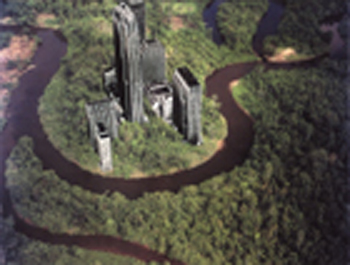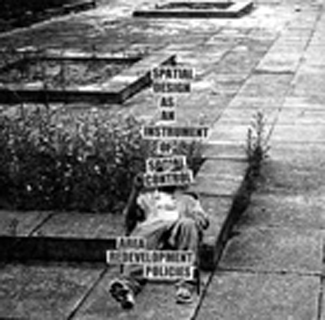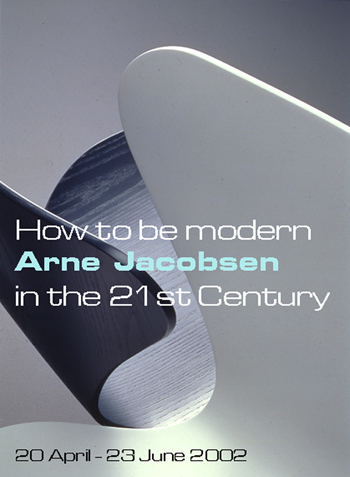Exhibition Review
|
MOMA Oxford Concrete Garden: Jakob Kolding, Pia Ronicke, Jonas Maria Schul curated by Henriette Bretton-Meyer How to be Modern: Arne Jacobsen in the 21st century curated by Astrid Bowron Both exhibitions run until 23 June 2002 |
||
|
Concrete Garden occupies the ground floor at MOMA and comprises the work of three artists: Jakob Kolding, Pia Ronicke & Jonas Maria Schul. Schul's work is the most striking, with three gardens displayed: Modest Garden, Protest Garden and Night Garden. The first uses plants that can grow in harsh urban conditions, the second uses invasive perennial plants that will not be displaced and the third uses plants that give off a scent at night, useful for night owls who enjoy their gardens at night. Schul makes the point that plants and gardens can have independent existences other than those created for them by people. Pia Ronicke's film Outside the Living Room (2000) is a mesmeric piece with fragments of music accompanying a camera moving slowly up the outside of a tower block. At the top of the 1950s tower block Ronicke has superimposed rice fields. A quote from the film reads 'gardens are an attempt to reconcile urbanisation with nature', and this gives an insight into Ronicke's philosophy. Jakob Kolding's work consists of posters of urban images which incorporate quotes such as 'Spatial design as an instrument of social control'. He examines the planning of suburban residential areas built in the 1960s and 1970s. The posters show the lists of questions that housing designers ask themselves during the planning process. This information certainly changed my own view of the politics behind the construction of residential areas, and I imagine it will give many viewers a new perspective on the space in which they live.
|
 |
|
 |
||
|
How to be Modern is an apt title for the Arne Jacobsen exhibition as the legacy of work left by the artist (who died in 1971) remains startlingly modern, even 50 years on. The exhibition is inspired by the 40th anniversary of St Catherine's College, which was designed (down to the cutlery & light fittings) by Jacobsen. This year also marks the centenary of Jacobsen's birth. The exhibition is divided into two sections, one documenting Jacobsen's progress as an architect and the other examining his work as a product designer. In addition to St Catherine's College, Jacobsen was also the architect for Copenhagen's first skyscraper, the SAS Royal Hotel (1956-1961). A 'hands-on' area lets you try out Jacobsen's chairs and the famous left-handed spoons, as seen in Stanley Kubrick's film 2001: A Space Odyssey. Do allow plenty of time for your visit, as the film documenting Jacobsen's life (The ant, the swan and the egg - 2002) runs for one hour. This exhibition uses Jacobsen's work to educate the spectator on How to be Modern. The display is a testament to the philosophy that form and function equal good design. In the words of the artist, "Functionalism is a style, and the liberation from style, and it purely and clearly expresses the function of objects." This philosophy continues to give much joy to the people who use his buildings today. Lita Doolan, 23.05.02 |
 |
|